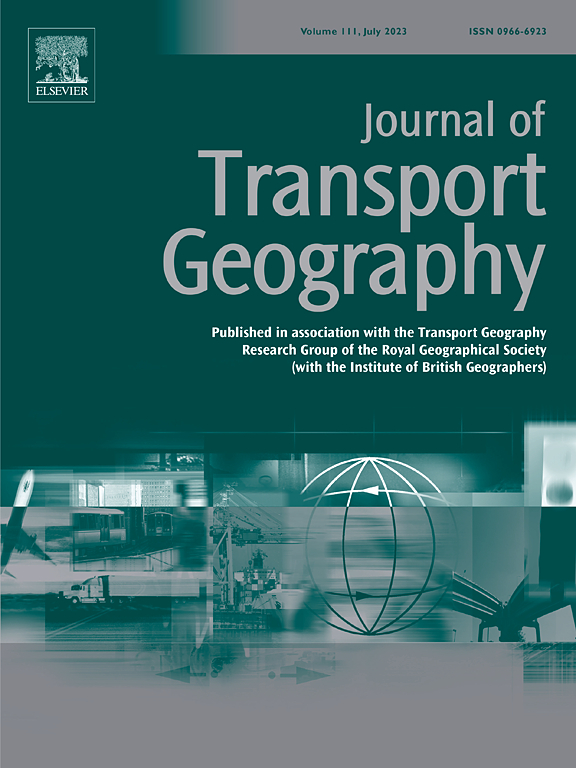The effects of infrastructure quality on the usefulness of automated vehicles: A case study for Leeds, UK
IF 5.7
2区 工程技术
Q1 ECONOMICS
引用次数: 0
Abstract
With rapid advancements in automated driving technologies, there is a growing emphasis on enhancing physical and digital infrastructure to ensure safe and efficient integration of Automated Vehicles (AVs) into road networks. This study conducts the first exploratory analysis of the impact of heterogeneity in road infrastructure readiness on the usefulness of AVs for urban commuting, with a focus on Leeds, UK. Employing a hypothetical scenario where current car commuters have access to AVs for their daily trips, this research explores possibility of replacing commuting trips by AVs, given the existing levels of infrastructure readiness. Through the evaluation of various road network configurations and AV capabilities, the study evaluated the usefulness of AVs for such journeys. The findings reveal that infrastructure readiness levels significantly impact AV performance and usefulness, potentially necessitating infrastructure upgrades to facilitate future AV deployment. The analysis indicates that relatively less challenging paths for AVs tend to be longer than those typically used by human-driven vehicles, with an increase of approximately 5 miles (8 km) in travel distance for some origin-destination pairs. Despite only 20 % of road links being classified as extremely challenging within the network, their dispersed distribution resulted in significant connectivity barriers, rendering a considerable number of trips infeasible for AV navigation. The research findings can provide valuable insights to help understand the integration of AVs into road networks and assist decision-makers and transport planners in developing informed and forward-looking policies, regulations and guidelines.
基础设施质量对自动驾驶汽车实用性的影响:英国利兹案例研究
随着自动驾驶技术的快速发展,人们越来越重视加强物理和数字基础设施,以确保自动驾驶汽车(AV)安全、高效地融入道路网络。本研究以英国利兹市为重点,首次探索性地分析了道路基础设施准备程度的异质性对自动驾驶汽车在城市通勤中的实用性的影响。本研究采用了一种假设情景,即目前的汽车通勤者在日常出行中可以使用自动驾驶汽车,探讨在现有基础设施就绪程度的情况下,自动驾驶汽车取代通勤出行的可能性。通过评估各种道路网络配置和自动驾驶汽车的能力,该研究对自动驾驶汽车在此类出行中的实用性进行了评估。研究结果表明,基础设施的完备程度极大地影响了自动驾驶汽车的性能和实用性,因此有必要对基础设施进行升级,以促进未来自动驾驶汽车的部署。分析表明,相对于人类驾驶车辆通常使用的路径,自动驾驶汽车的路径挑战性相对较低,在某些起点-目的地对中,自动驾驶汽车的行驶距离会增加约 5 英里(8 公里)。尽管网络中只有 20% 的道路连接被归类为极具挑战性,但它们的分散分布造成了严重的连接障碍,使相当多的行程无法进行自动驾驶汽车导航。研究结果可以提供有价值的见解,帮助理解将自动驾驶汽车融入道路网络的问题,并协助决策者和交通规划者制定知情且具有前瞻性的政策、法规和指导方针。
本文章由计算机程序翻译,如有差异,请以英文原文为准。
求助全文
约1分钟内获得全文
求助全文
来源期刊

Journal of Transport Geography
Multiple-
CiteScore
11.50
自引率
11.50%
发文量
197
期刊介绍:
A major resurgence has occurred in transport geography in the wake of political and policy changes, huge transport infrastructure projects and responses to urban traffic congestion. The Journal of Transport Geography provides a central focus for developments in this rapidly expanding sub-discipline.
 求助内容:
求助内容: 应助结果提醒方式:
应助结果提醒方式:


